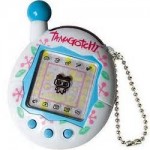When fake becomes better – final project reflection
by Carol Scott
We value truth and authenticity in the stories we hear and in the stories that are told about us. We celebrate an ever more connected world, and point to the millions of people participating in online social networks worldwide as proof of our innate desire for community. But it isn’t real. The “friends” I have on Facebook are not the flesh and blood people I talk to, have meals with, confide in. Scrolling through my newsfeed is like reading a never-ending Christmas letter from that cousin with the perfect family. I see pictures of fabulous vacations, adorable pets, and joyous gatherings. I read a
stream of witty comments and assume they flowed from the keyboard in an unedited series of clicks. I’m left feeling slightly boring and unenthusiastic. So, after much agonizing over how it will be received and by whom, I post a status update and check compulsively to see if and how often it is “liked.” It’s exhausting and unsatisfying. And yet, I am compelled to keep going back. Similarly to parallel play by babies who don’t know how to interact yet – I build my tower of status updates over here and you build your tower over there. It’s all performance and voyeurism, not communication, and most certainly not community.
Why, then, the insistence on the label? Is feeling part of a communal whole so important that we will fight to keep up appearances? Are we really members of the communities we claim? What does that mean? Does getting on a mailing list make one a member of a community? Is it when you go to a meeting? What if you don’t volunteer for anything? Are we, by virtue of our identities, members of certain communities, or does membership require interaction? And what does this mean for life writing? Do we tell our stories differently online than we do in person or on paper? These are the questions I’m considering for my final paper.
I’m reading Alone Together, Why We Expect More from Technology and Less from Each Other by Sherry Turkle, Professor of the Social Studies of Science and Technology at MIT as background material, and what I’m coming to believe is that our embrace of the digital as real is a frightening departure from human interaction that has grown apace with technology’s ability to provide us with a digital escape. In her discussion of robotics, Sherry Turkle writes that even the most primitive 1980’s Tamagochi was able to lead children to think of it as a creature in pain rather than a broken toy “…not because of [the toys’] sophistication but because of the feelings of attachment they invoke.” (44)
As a parent I was frequently warned that loss of creativity goes hand in hand with a decrease in imaginative play, but I wonder now if the problem is not even more corrosive to our human relationships. Turkle is primarily interested in the Robotic Moment and our human readiness to replace human interaction with time spent with companion robots. I believe that diminished value given to the authentic, the living, prepares us for online deception, which impacts the stories we tell online about ourselves and others and the way we tell them.
Additionally, Turkle’s study of children’s interaction with robotic toys and pets shows that the children incorporate the robots into their family narrative, identifying the My Real Baby toy as a sibling, and experiencing anxiety and rivalries similar to real life families. Is it too big a leap to envision a time when biographies and autobiographies include “relationships” with robots as a matter of course, and to see “Facebook friends” as a step along the way?
and experiencing anxiety and rivalries similar to real life families. Is it too big a leap to envision a time when biographies and autobiographies include “relationships” with robots as a matter of course, and to see “Facebook friends” as a step along the way?




